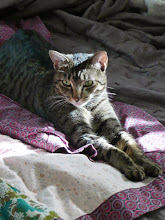 |
| thanks vintage printable (PD) |
Like many another deeply religious man, St. Hugh had unbounded love to all living things. As at Villarbenoit, his care to serve his brethren had led to his being intrusted with the charge of his aged father, so now he was appointed to attend to all the personal wants of an old monk, who in return seems to have looked after his spiritual welfare. But his love did not show itself to his fellow-men only; it condescended also to the smaller beings of creation. The saint could find some solace for his combats with the evil one by taming the little birds and squirrels of that wild neighbourhood to come into his cell, where, during his meals, they would eat at his table, feeding out of his dish or from his hand. The stern Prior, however, forbade him even this one amusement, lest he should take too much pleasure in his dumb friends and allow them to interrupt his devotions. It was not till he got to Witham that he could indulge his affection for animals; there for three years a pet bird lived in his cell, taking its flight at nesting-time and returning later on with its fledgings as if to present them to him; but in the fourth year it came back no more, to his great vexation. Again, when Bishop of Lincoln, an unusually fine swan attached itself to him, showing as much affection for him as a dog.
One of Hugh's attributes is a swan, not surprisingly. This great blog post will tell you all about Hugh and his buddy.
The excerpt is from: Thompson, E. Margaret. (1895). A history of the Somerset Carthusians. London: J. Hodges. 51-2.






















